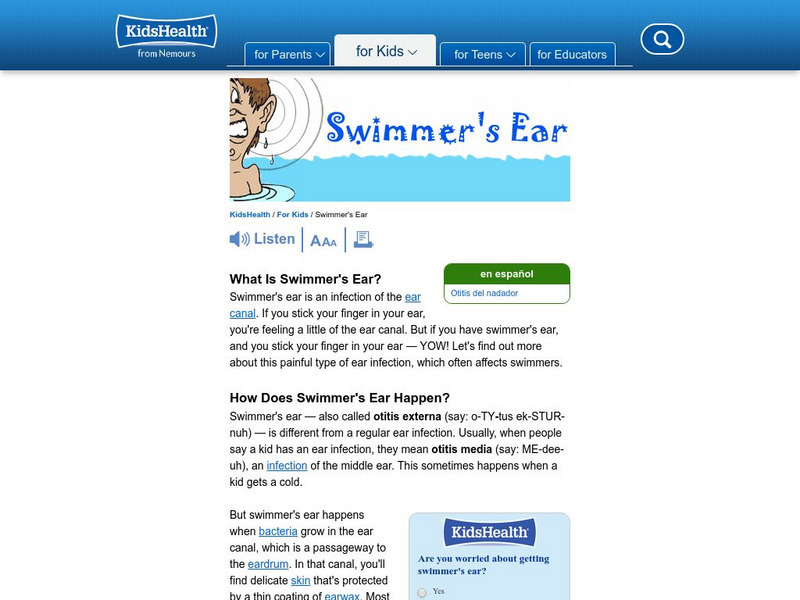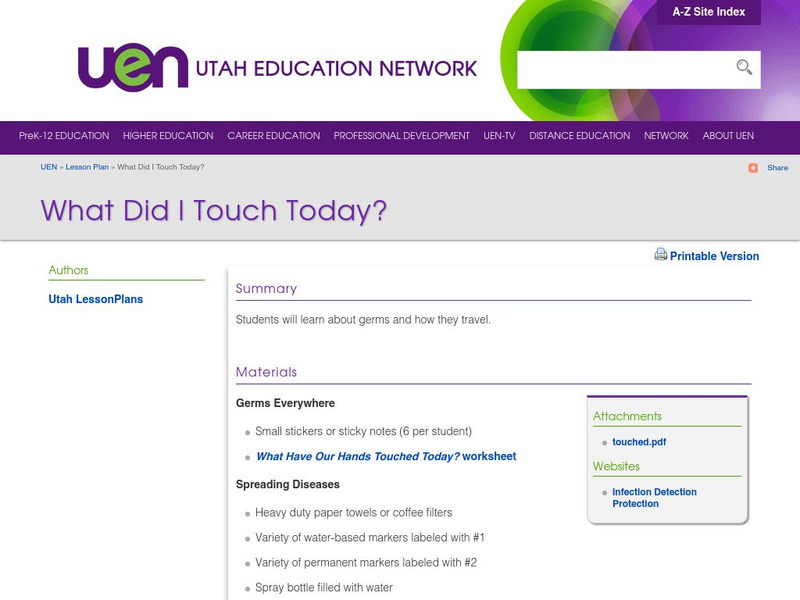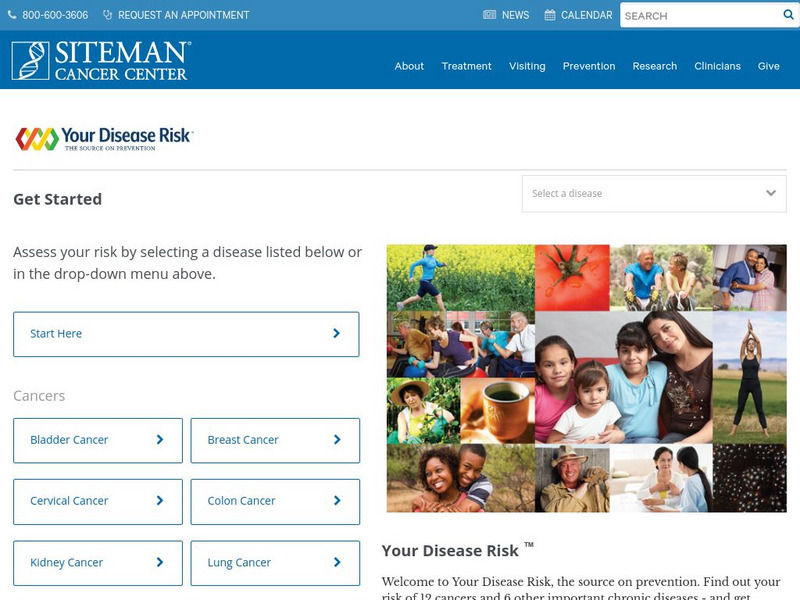University of Waterloo (Canada)
The Concept of Disease: Historical Developments
Contains information on scientific developments surrounding diseases. Includes the following sections: Hippocrates and the Humoral Theory; Fracastoro and the Contagion Theory; Pasteur, Lister, Koch and the Germ Theory; and Current...
National Health Museum
Access Excellence: Yellow Jackie: Outbreak
Interactive mystery about a disease outbreak. Students investigate an outbreak of a disease on board a ship by interviewing people, consulting medical reference, and observer other clues to determining what disease is causing the outbreak.
Curated OER
Kids Health: Swimmer's Ear
Swimmer's Ear is an infection in the outer ear canal. Read about how this infection comes about, how to treat it, and what to expect when you have Swimmer's Ear.
Utah Education Network
Uen: What Did I Touch Today?
In this lesson, students will assess what items in the classroom are touched the most. Students will investigate germs and distinguish between communicable and noncommunicable diseases.
Centers for Disease Control and Prevention
Centers for Disease Control: A Z Index for Diseases and Conditions
For health information at your fingertips, this A to Z list of diseases and conditions links to information on specific illnesses.
Other
Cook Children's Health Care System: Health Information: Conditions and Injuries
Large library of fact sheets about disease, medical conditions, and injuries, with explanations of symptoms, risk factors, treatments, prevention, and related information.
Other
Cook Children's Health Care System: Health Information: Videos and Animations
Collection of videos and animations that explain a variety of medical procedures, conditions, and treatments.
TED Talks
Ted: Ted Ed: How a Few Scientists Transformed the Way We Think About Disease
For several centuries, people though diseases were caused by wandering clouds of poisonous vapor. We now know that this theory is pretty ridiculous, and that diseases are caused by specific bacteria. But how did we get to this new idea...
PBS
Pbs News Hour Extra: Nine Deadly Diseases That Plagued the World
Students investigate nine deadly disease by examining George Washington's medical records. Students will also use the Center for Disease Control website to identify where these nine deadly diseases are prevalent in the world today.
National Health Museum
Access Excellence: The Blackout Syndrome
Become a medical investigator trying to solve the cause of a mysterious disease. Through a four-part mystery series, students try to figure out the source of the disease and how to treat it. By reading clues students make predictions and...
University of Utah
University of Utah: Learning Center: learn.genetics: Prions: Killer Proteins
Find out about several diseases such as Mad Cow and Creutzfeldt-Jakob, which are examples of diseases caused by prions, or protein infections.
Other
Your Disease Risk
Learners examine their risk of developing five of the most important diseases in the United States. Tips for prevention are included. The diseases evaluated are cancer, diabetes, heart disease, osteoporosis, and a stroke.
Centers for Disease Control and Prevention
Centers for Disease Control: Division of Parasitic Diseases
This database includes life cycles, images, and diagnosis information for several parasites that can infect humans. The search does work better using scientific names.
Khan Academy
Khan Academy: Taste Disorders and Their Causes
This five-questions quiz pertaining to related to the passage "Taste Disorders and Their Causes."
A&E Television
History.com: How the Columbian Exchange Brought Globalization and Disease
Christopher Columbus' arrival in the Caribbean in 1492 kicked off a massive global interchange of people, animals, plants and diseases between Europe and the Americas.











